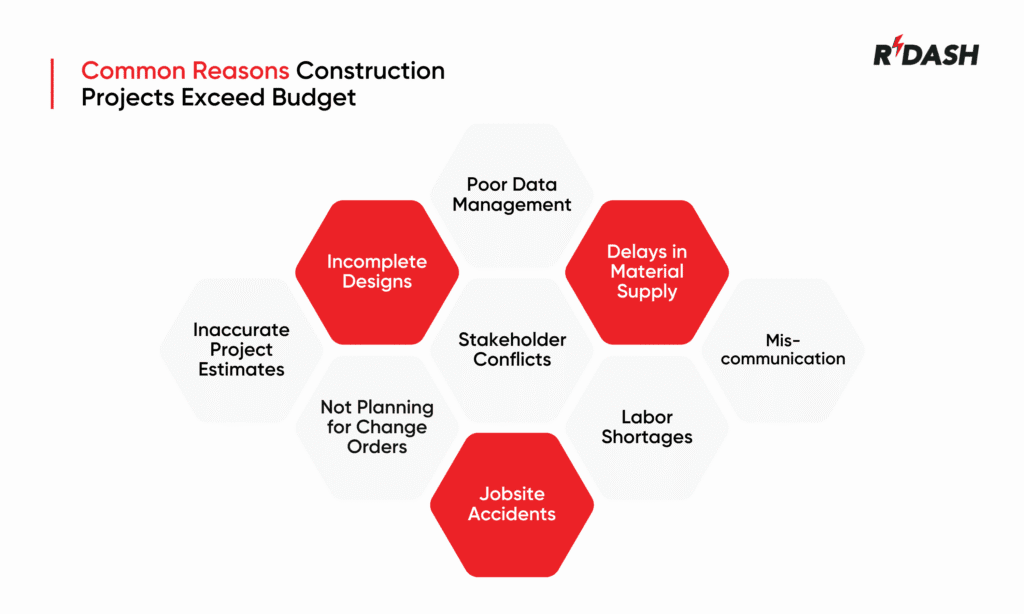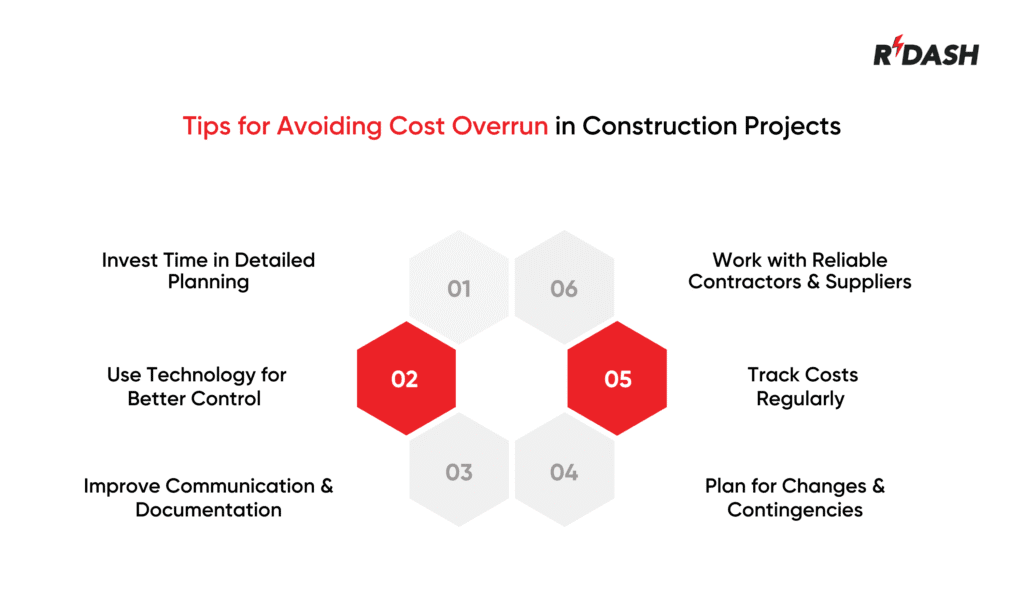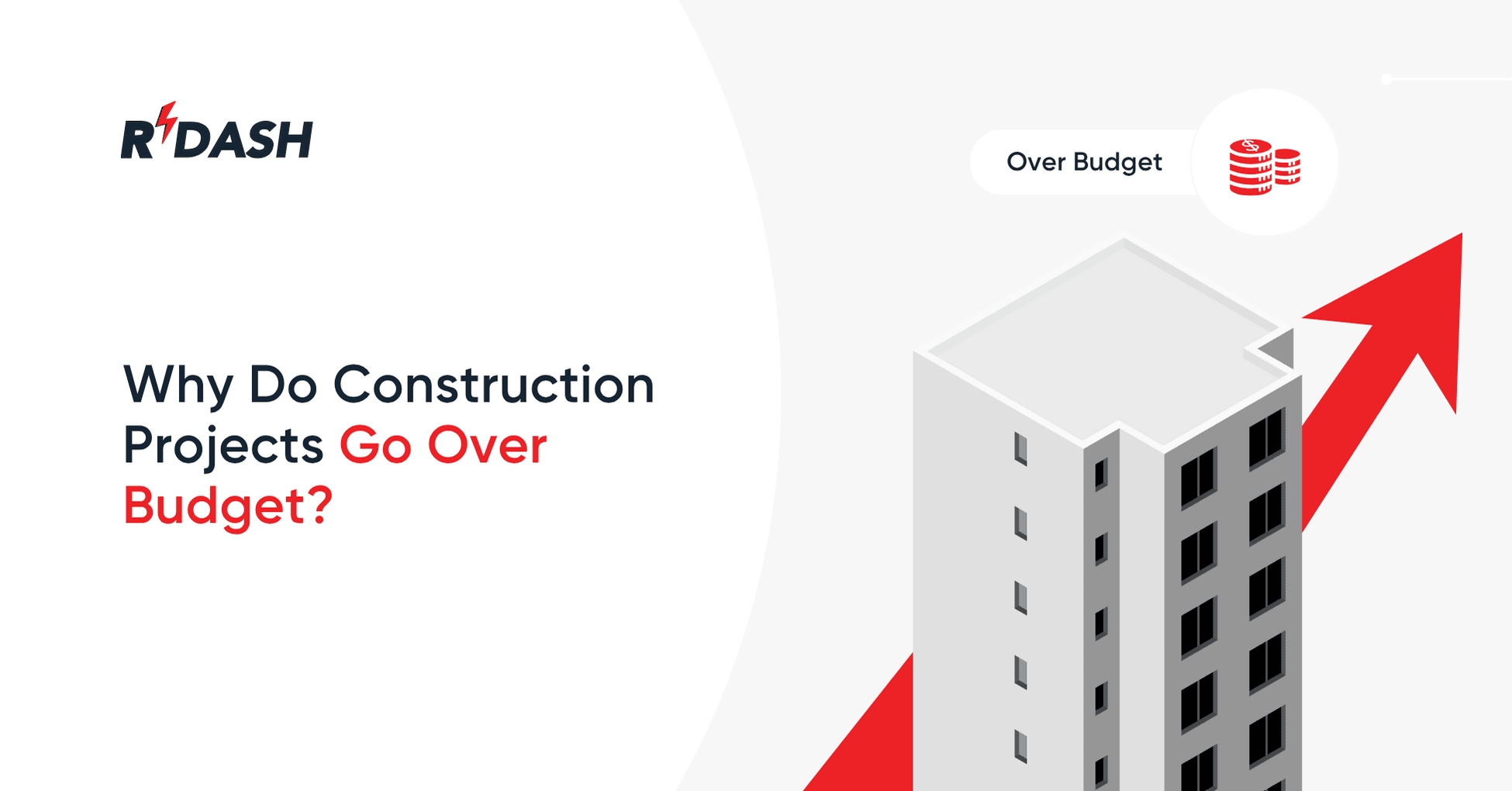Why Do Construction Projects Go Over Budget?
Staying within budget is often one of the biggest challenges for construction companies. Even experienced teams sometimes face this issue, and it can eat away at profits, delay payments, and even hurt your reputation. But why does this happen so often?
Below are some of the most common reasons construction projects exceed the budget, and why staying on top of these issues matters.
Common Reasons Construction Projects Exceed Budget

1. Inaccurate Project Estimates
Every project begins with an accurate cost estimate. If this is not done carefully, everything else can go wrong. Many companies underestimate how much labor, materials, equipment, or overhead costs will actually add up to. Small errors in calculations can snowball into huge losses by the time the project is done.
Good estimates rely on up-to-date rates, realistic timelines, and lessons learned from past projects. Relying on guesswork or outdated costs will almost always lead to overspending.
2. Incomplete Designs
Well-prepared designs and drawings form the foundation of a successful project. If the designs are missing key details or have errors, the team on-site might have to redo parts of the work. This means wasted materials, extra labor hours, and unexpected delays.
In many cases, incomplete plans also lead to change orders later on, which can pile up and blow the budget if they’re not managed properly.
3. Not Planning for Change Orders
Modifications and change orders are common in construction work. Clients may want to change finishes, add extra features, or adjust layouts after the work has started. But if the project plan doesn’t have a buffer for these changes, or if they aren’t tracked well, costs can quickly get out of control.
Every change order should be priced correctly, approved by the client, and reflected in the updated budget and timeline. Otherwise, surprises are guaranteed.
4. Poor Data Management
A lot of money is lost simply because teams don’t have clear, accurate data at the right time. If site managers don’t know the real-time status of materials, labor, or budgets, small mistakes get missed until they become bigger problems.
Good data management means everyone is working with the latest information. With digital tools or construction management software, you can track budgets, progress, material usage, and labor hours in real-time, helping prevent unnecessary spending.
5. Miscommunication
Construction involves many people: project managers, contractors, subcontractors, clients, suppliers, and workers. If these people aren’t communicating clearly, important information gets lost.
For example, if a design change is not passed on to the crew on time, they may continue work that needs to be redone later. Or a subcontractor might not get updates on scheduling changes, leading to wasted time and extra costs.
Regular meetings, clear documentation, and real-time updates are essential to avoid these mistakes.
6. Jobsite Accidents
Safety incidents don’t just put workers at risk — they also cost money. If an accident happens, work may need to stop, investigations may be needed, and repairs might be required. Insurance claims, medical costs, or legal fees can all add up.
Proper safety training, clear safety protocols, and regular site inspections help reduce these risks and keep the project moving smoothly.
7. Delays in Material Supply
Construction materials make up a large part of any budget. If materials arrive late, work can get delayed, which means more labor costs and rental costs for equipment sitting idle. And when materials are urgently needed, you may have to pay a premium price.
Better procurement planning, working with trusted suppliers, and tracking material orders can help you avoid these unexpected costs.
8. Labor Shortages
Even if your budget is perfect on paper, a shortage of skilled labor can ruin it. If you don’t have enough trained workers, you may have to hire expensive subcontractors at the last minute or pay for overtime. Untrained workers can also make costly mistakes that require rework.
Investing in training and proper workforce planning helps keep labor costs under control.
9. Stakeholder Conflicts
Sometimes disagreements happen between the client, contractors, or subcontractors about the scope of work, payment terms, or design changes. If these disputes are not resolved quickly, they can lead to work stoppages or even legal fees, all of which push up the project costs.
Having clear contracts, good communication, and a process for handling conflicts early can keep things on track.
Going over budget isn’t always because of one big mistake; it’s often a series of small issues that build up. From incomplete plans to poor communication, every gap can lead to higher costs. The good news is that with better planning, clear documentation, real-time updates, and stronger teamwork, these risks can be managed.
Staying within budget means more than just saving money — it means delivering better projects, building trust with clients, and growing your business the right way.
Tips for Avoiding Cost Overrun in Construction Projects
Going over budget is one of the biggest risks in any construction project, but with the right approach, you can reduce surprises and keep spending under control. Here are some useful tips to help you keep costs under control:

1. Invest Time in Detailed Planning
Good planning is the backbone of any successful project. Before work begins, spend time creating a clear scope of work, realistic timelines, and accurate cost estimates. Involve your team, subcontractors, and suppliers early so everyone understands expectations. The more detailed your plan, the less chance there is for surprises later.
2. Use Technology for Better Control
Modern tools like Building Information Modeling (BIM) and construction management software help teams track costs, progress, and changes in real time. These tools keep office and site teams connected, help you spot potential issues sooner, and make it easier to adjust plans without losing control of your budget.
3. Improve Communication and Documentation
Miscommunication is a hidden cost in many projects. Keep everyone — from designers and engineers to on-site crews — on the same page. Hold regular check-ins and use written updates to make sure decisions and changes are documented properly. This creates a clear trail you can refer to if issues come up later.
4. Plan for Changes and Contingencies
Even with the best planning, changes happen. Make sure you have a process to handle change orders and unexpected work. Set aside a realistic contingency budget: around 5-10% of the project cost, to cover surprises like design changes, material price hikes, or weather delays.
5. Track Costs Regularly
Don’t wait until the end of the project to check your budget. Review costs weekly or monthly. Compare what you planned to spend with what you’ve actually spent. Tracking costs in real time means you can spot overruns early and make quick adjustments to stay on track.
6. Work with Reliable Contractors and Suppliers
A good team is one of your best defenses against cost overruns. Vet subcontractors and suppliers carefully. Make sure they understand the project’s requirements and timeline. Reliable partners are less likely to cause delays or mistakes that eat into your budget.






